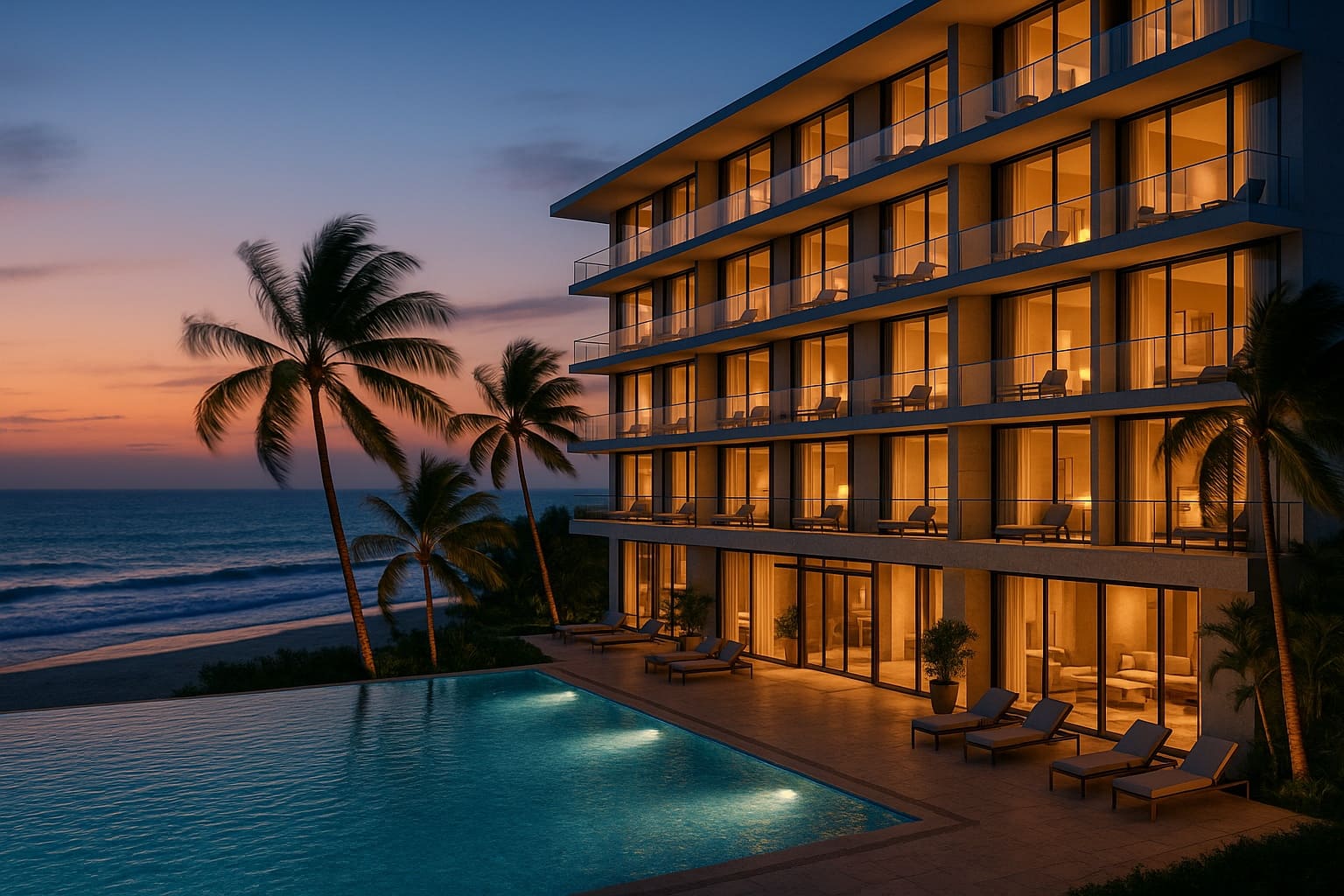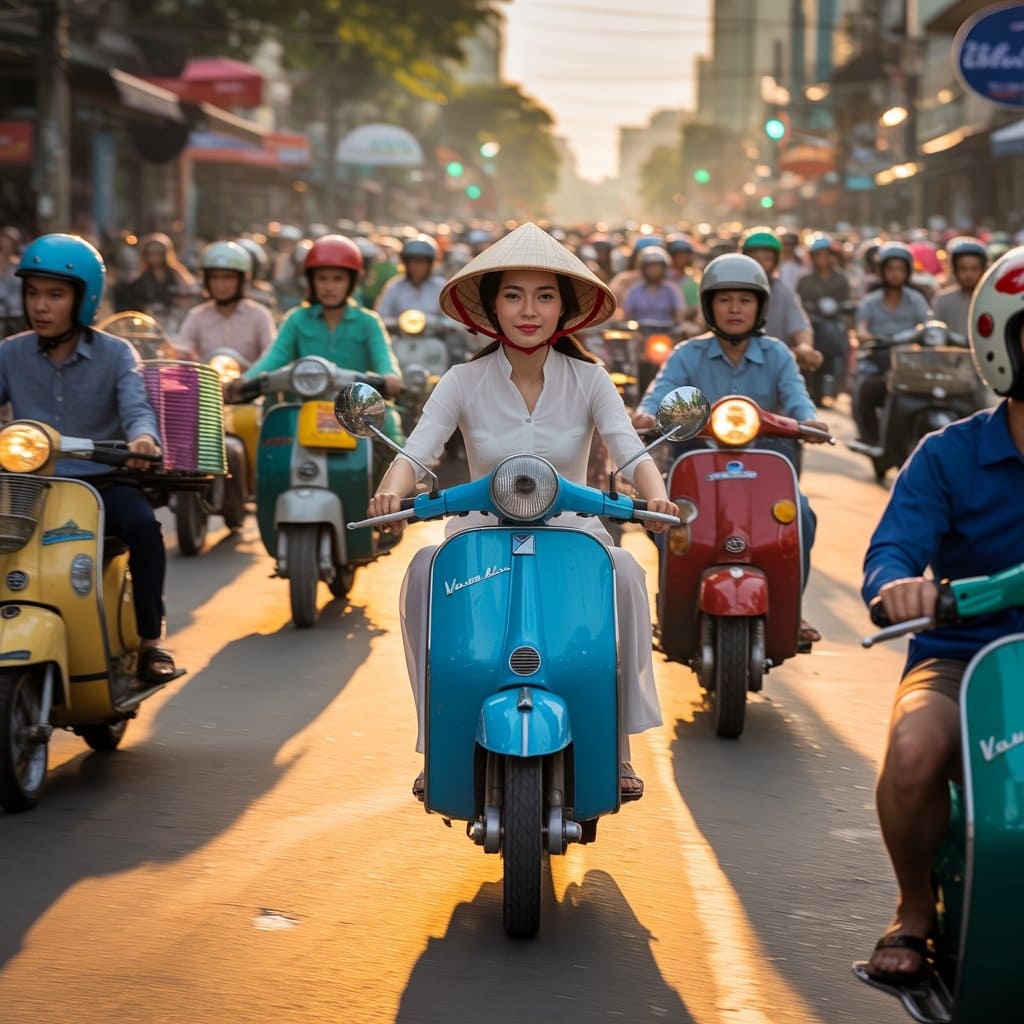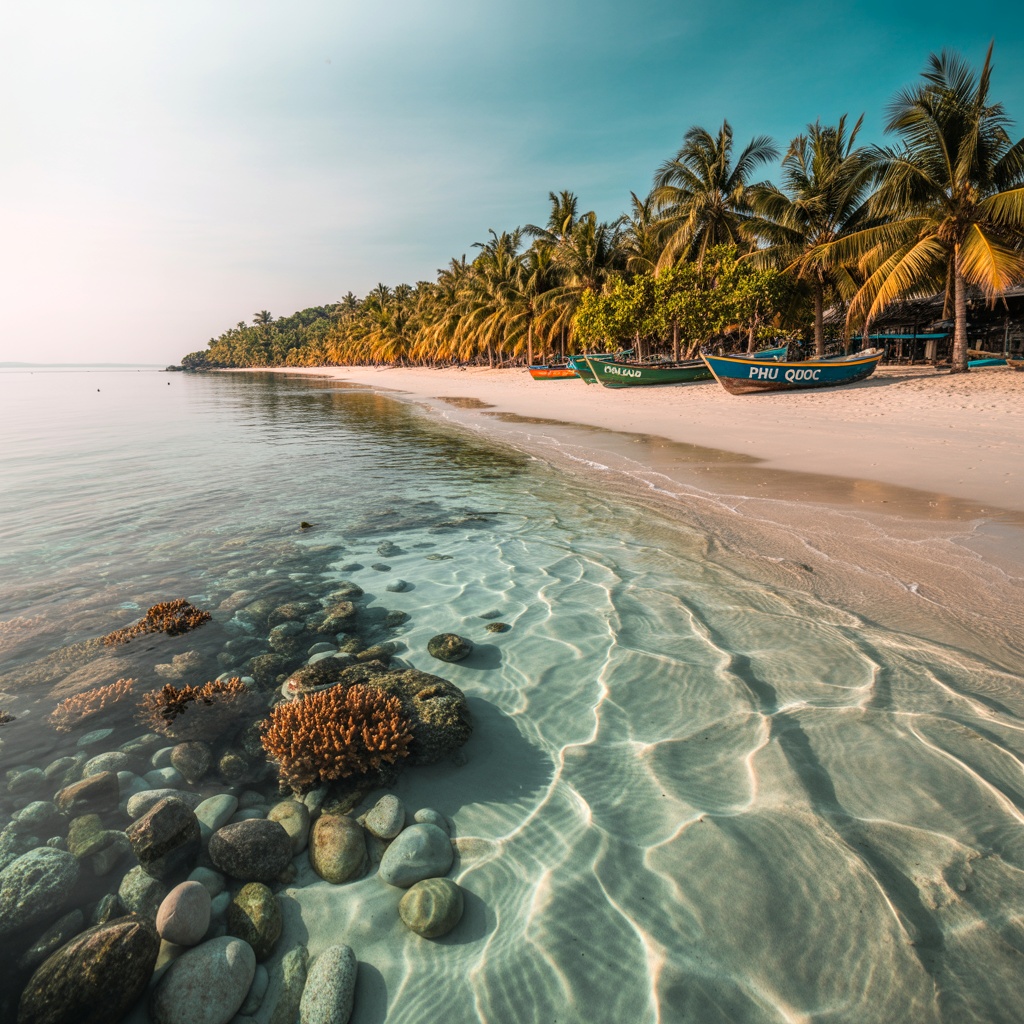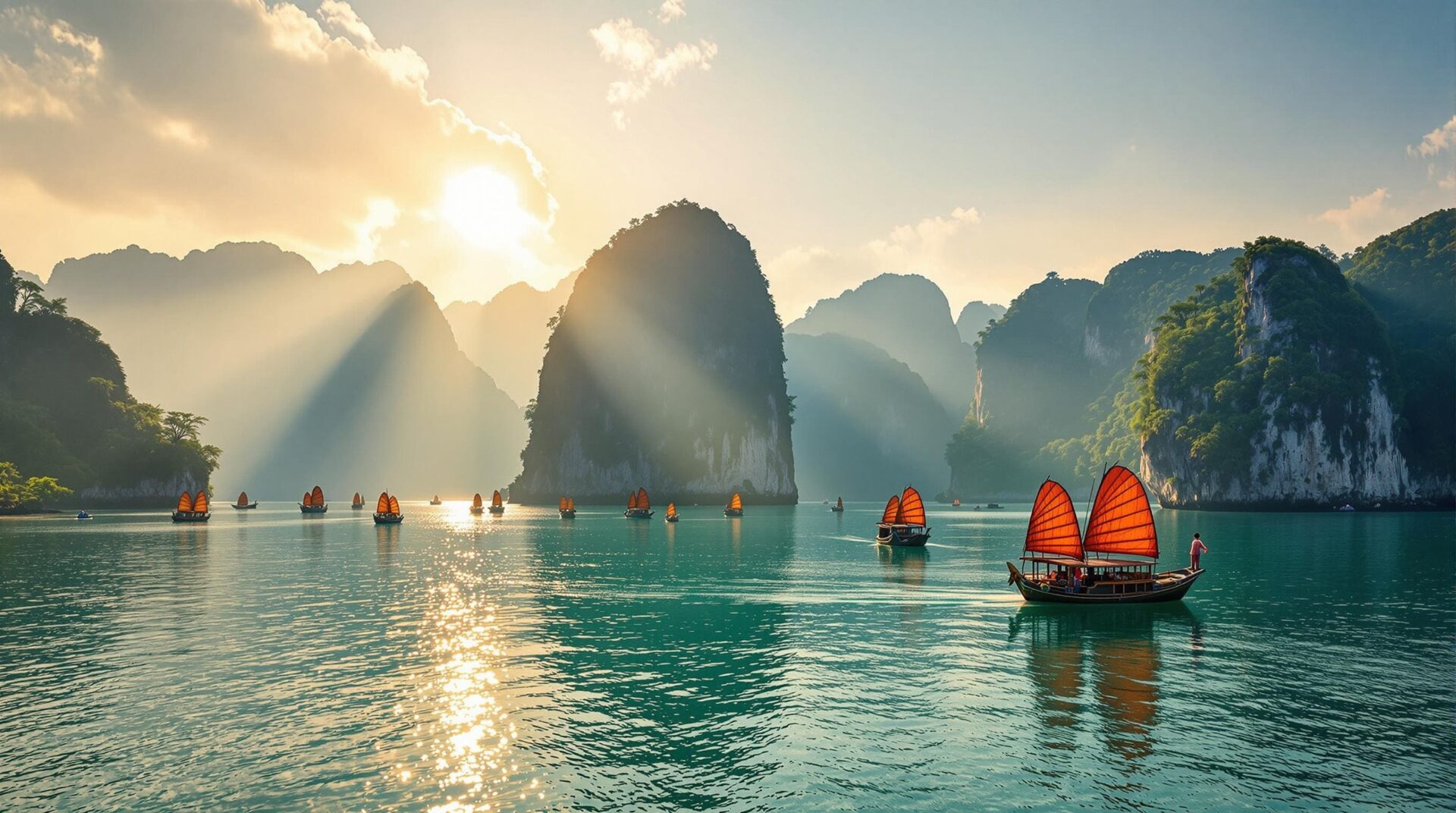Yes, it’s totally doable – and no, I didn’t just live on rice!
Why Vietnam?

When I started planning my Southeast Asia trip, my goal was clear: tropical vibes, great food, and budget-friendly living. I kept hearing about how affordable Vietnam is, and I thought: What if I could do it all on just $20 a day?
Spoiler: I did. And I loved every minute of it.
🛏️ Accommodation – Private Rooms for $8–10 a Night

I’m not really a hostel person, so I looked for cheap but clean and safe private stays. In Vietnam, this isn’t a luxury – it’s a reality.
Here’s what I found:
- Da Nang: Studio apartment with a balcony – $9/night (booked on Agoda)
- Nha Trang: 5-minute walk to the beach – $8/night (via Booking.com)
- Ho Chi Minh City: Small hotel in District 1 – $10/night
👉 Tip: Book the first few nights online, then negotiate locally for longer stays – it often gets cheaper.
🍜 Food – Street Food Paradise (and Your Wallet Will Thank You)

Vietnamese food is a dream: fresh, flavorful, and super affordable.
Here’s what a typical day of eating looked like:
- Breakfast: Bánh mì (crispy baguette sandwich) – $0.80
- Lunch: Pho or bún chả – $1.50–$2.00
- Dinner: Stir-fried seafood or rice dish – $2.50–$3.50
- Drinks: Fresh smoothie or iced coffee – under $1
Total food cost per day? Around $6–7
And yes, it was delicious every single time.
🛵 Transport – Scooters, Buses, and Cheap Rides

You haven’t really been to Vietnam until you’ve ridden a scooter.
- Scooter rental: $3–5/day
- Gas: Less than $1/liter – a few bucks fills the tank
- Grab (ride-hailing app): Short trips for $1–2
- Intercity buses: For example, Da Nang → Nha Trang (overnight sleeper bus): $10
- Local buses: Often just $0.30–$0.50
Scooter is freedom. But buses and trains are also cheap and reliable.
🏞️ Activities – So Many Free or Low-Cost Things to Do

You don’t need big bucks to have fun in Vietnam.
Here are some of my favorite low-cost experiences:
- Beaches: Free
- Hiking to waterfalls: Free or $1 entrance
- Pagodas, temples, markets: Free or <$2
- Museums: $1–3
- Massage (yes please): $5–7 for 60 minutes
Daily activity budget? $2–4 max.
💰 Daily Budget Breakdown
Let’s crunch the numbers. Here’s what I typically spent per day:
| Category | Cost (USD) |
|---|---|
| Accommodation | $8–9 |
| Food | $6–7 |
| Transport | $3–4 |
| Activities | $2–3 |
| Total | ~$19–23 |
On lighter days (no travel, chilling at the beach), I got by on just $15.
✈️ Helpful Tips for Fellow Budget Travelers
- Avoid high season (December–February) for cheaper rates and better deals.
- Use cash – it’s preferred almost everywhere and helps with bargaining.
- Negotiate for better prices on scooters or weekly rentals.
- Eat where the locals eat – busy street food spots are usually safe and tasty.
✅ Do’s and Don’ts in Vietnam
| ✅ Do This | ❌ Avoid This |
|---|---|
| Learn a few Vietnamese phrases | Expect everyone to speak English |
| Use Grab app for cheap transport | Rely on random taxis (they may overcharge) |
| Carry cash (VND) for most purchases | Count on card payments everywhere |
| Eat at busy street food stalls | Choose empty restaurants (bad sign!) |
| Negotiate prices respectfully (e.g. scooters, souvenirs) | Haggle aggressively – it’s not welcome |
| Dress modestly at temples and pagodas | Wear tank tops or shorts in sacred places |
| Wear a helmet if you rent a scooter | Ride without insurance or experience |
| Try local coffee (cà phê sữa đá!) | Assume it’s the same as Western coffee |
| Use Google Translate offline | Expect English menus in rural areas |
⁉️ Vietnam Travel FAQ
Q: Do I need a visa to enter Vietnam?
A: Depends on your passport. US, UK, EU, and Australian citizens often need an e-visa, which you can apply for online. It’s simple and usually processed in 3–5 days.
Q: How much cash should I carry?
A: ATMs are widely available. Carry around 1–2 million VND (~$40–80) in cash for daily expenses. Most small vendors and even hotels prefer cash.
Q: Is the tap water safe to drink?
A: No. Always drink bottled water. Even locals don’t drink tap water.
Q: What’s the internet like?
A: Surprisingly fast! Get a local SIM card with data (Viettel or Mobifone) for ~$5–10/month at the airport or convenience stores.
Q: What’s the best time to visit?
A: March–May and September–November offer good weather and fewer crowds. Avoid the Tet holiday (Vietnamese New Year) if you don’t like closures.
Q: Is Vietnam safe for solo travelers?
A: Yes! It’s one of the safest countries I’ve visited. Use basic common sense, especially at night or in big cities.
Q: Can I use USD or AUD?
A: Not really. Always pay in Vietnamese dong (VND). Some high-end places might accept USD, but you’ll get a bad rate.
⚠️ Warnings & What to Watch Out For
- Currency confusion – VND has lots of zeros. 100,000 VND = about $4. Double-check before paying!
- Taxi scams – Use Grab or trusted companies like Mai Linh or Vinasun. Avoid random taxis waving you down.
- Tourist pricing – In markets, foreigners often get quoted higher prices. Always ask the price before ordering or buying, especially if there’s no menu or price tag.
- Driving a scooter without experience – It’s fun but chaotic. If you’ve never driven in Asian traffic, practice or stick to public transport.
- Fake tour operators – Book tours through hotels or reputable agencies. Always check Google reviews.
- Petty theft – Not common, but don’t leave phones or bags hanging off your scooter or on café tables near the street.
🌅 Final Thoughts – Was It Worth It?
Absolutely. Traveling on a tight budget in Vietnam wasn’t about sacrificing comfort – it was about making smart choices. I never felt like I was missing out. If anything, this trip reminded me that you don’t need a fortune to explore the world.
Useful links

